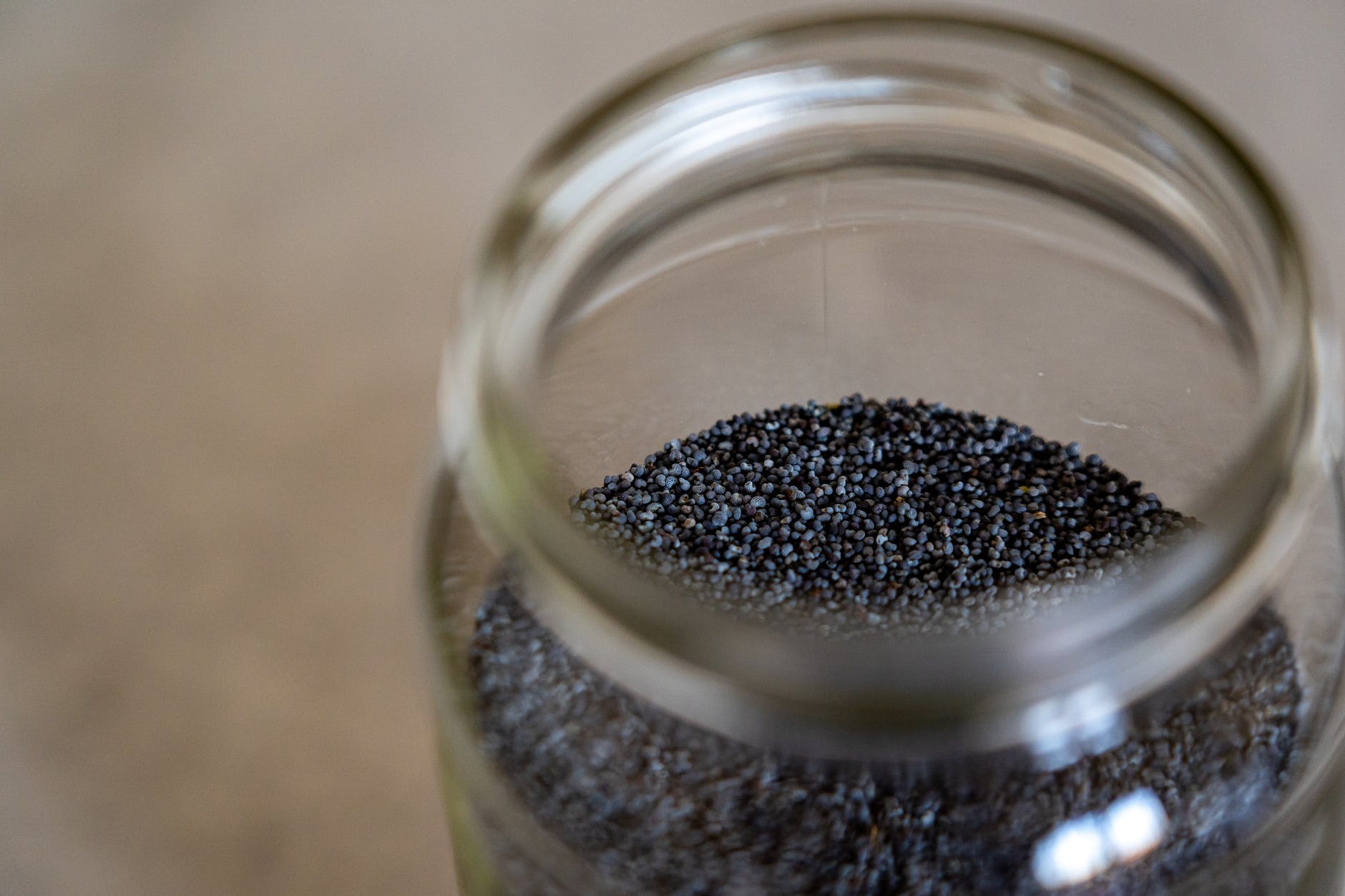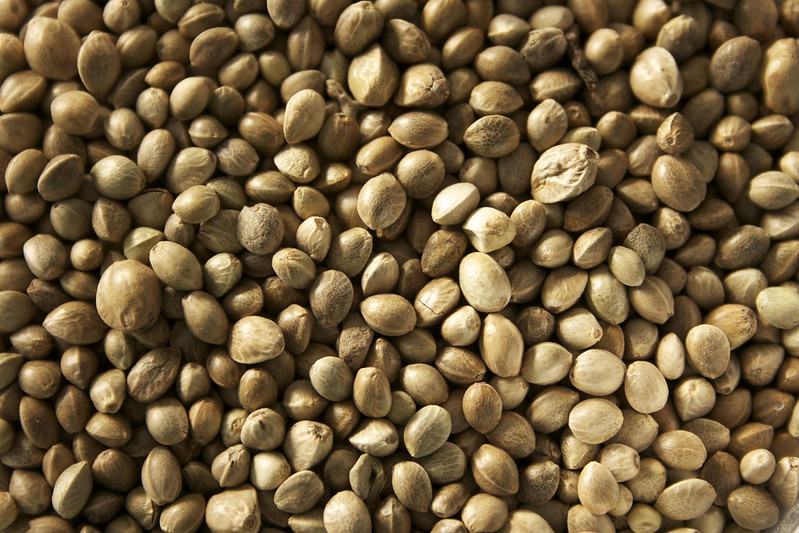
Introduction: 🌼🌟 Welcome to another enlightening blog post in our series on seeds and nuts and their impact on weight loss! In this edition, we will delve into the world of poppy seeds and uncover the truth behind their supposed role in weight management. Poppy seeds, known for their unique flavor and culinary uses, have long been associated with various health benefits. Join us as we separate the myths from the facts and explore whether poppy seeds can truly contribute to your weight loss journey.
Macros per 100g of Poppy Seeds:
| Nutrient | Amount |
|---|---|
| Calories | 525 |
| Carbohydrates | 28.1g |
| Protein | 17.9g |
| Fat | 41.6g |
| Fiber | 19.5g |
| Sugars | 3.9g |
🌼🔍 Poppy seeds, derived from the opium poppy plant, have a rich history and a distinctive nutty flavor. Let’s explore the potential benefits of poppy seeds and their impact on weight management in more detail:
- Fiber for Satiety and Digestive Health: 🌼🌾 Poppy seeds are an excellent source of dietary fiber, both soluble and insoluble. Fiber plays a crucial role in weight loss by promoting a feeling of fullness and reducing appetite. It also aids in proper digestion, regulates bowel movements, and supports a healthy gut. The high fiber content in poppy seeds can help prevent overeating, promote satiety, and support weight management.
- Protein for Muscle Support and Metabolism: 🌼💪 Poppy seeds are a surprising source of plant-based protein. Protein is essential for building and repairing tissues, supporting muscle health, and boosting metabolism. By incorporating poppy seeds into your diet, you can provide your body with a plant-based protein source that can aid in weight loss, improve muscle tone, and enhance your overall metabolic rate.
- Healthy Fats for Satiety and Nutrient Absorption: 🌼💧 Poppy seeds contain healthy fats, including monounsaturated and polyunsaturated fats, which are beneficial for weight management. These fats contribute to satiety, helping you feel full for longer periods and reducing the likelihood of overeating. Healthy fats also support the absorption of fat-soluble vitamins and provide a source of energy. Incorporating poppy seeds, in moderation, into a balanced diet can help maintain a healthy fat balance and support weight loss efforts.
- Minerals and Antioxidants for Overall Well-being: 🌼🌈 Poppy seeds are rich in essential minerals, including calcium, iron, magnesium, phosphorus, and zinc. These minerals play a vital role in various bodily functions, such as bone health, energy production, and immune system support. Additionally, poppy seeds contain antioxidants, such as flavonoids and phenolic compounds, which help protect the body against free radical damage and reduce inflammation.
- Phytochemicals with Potential Health Benefits: 🌼🌿 Poppy seeds contain phytochemicals, including alkaloids and phenylalanine derivatives. While further research is needed, some studies suggest that these compounds may have potential health benefits, such as pain relief and anti-inflammatory properties. However, it’s important to note that these compounds are present in minimal amounts and their effects are not solely attributed to poppy seeds consumed as part of a balanced diet.
⚠️ Warnings and Considerations: 🚫 While poppy seeds offer potential benefits for weight management, it’s important to keep the following points in mind:
- Moderation and Caloric Awareness: 🚫 Poppy seeds are calorie-dense, so it’s crucial to consume them in moderation and be mindful of your overall caloric intake. While they provide essential nutrients, excessive consumption can lead to weight gain. It’s advisable to include poppy seeds as part of a balanced diet and consider portion sizes to avoid excessive calorie intake.
- Drug Testing and Legal Considerations: 🚫 Poppy seeds can contain trace amounts of opiates, which may result in a positive drug test. While the levels are typically low, it’s essential to be aware of this when undergoing drug testing or if you have concerns regarding legal implications. Ensure you source poppy seeds from reputable sources that comply with regulatory standards and check local regulations.
- Allergies and Sensitivities: 🚫 Some individuals may have allergies or sensitivities to poppy seeds. If you have known allergies to nuts or seeds, consult with a healthcare professional before incorporating poppy seeds into your diet.
- Pregnancy and Lactation Considerations: 🚫 Pregnant or lactating women should exercise caution when consuming poppy seeds, as they contain compounds that could potentially affect pregnancy or breastfeeding. It’s advisable to consult with a healthcare professional for personalized guidance.
💡 Recipe Ideas: Now, let’s explore some delicious and creative ways to incorporate poppy seeds into your weight loss journey:
- Lemon-Poppy Seed Overnight Oats: 🍋🌼 In a jar, combine rolled oats, almond milk (or your preferred milk), chia seeds, poppy seeds, a squeeze of lemon juice, and a drizzle of honey or maple syrup. Stir well, cover, and refrigerate overnight. In the morning, top with fresh berries or sliced fruits for a refreshing and nutritious breakfast.
- Poppy Seed-Crusted Baked Chicken Tenders: 🍗🌼 In a shallow bowl, mix poppy seeds with breadcrumbs, grated Parmesan cheese, and a pinch of salt and pepper. Dip chicken tenders into beaten egg, then coat them in the poppy seed mixture. Bake in the oven until the chicken is cooked through and the crust is golden and crispy. Serve with a side of steamed vegetables for a protein-rich meal.
- Citrus-Poppy Seed Dressing: 🥗🌼 In a blender or food processor, combine poppy seeds, lemon juice, orange juice, Dijon mustard, honey (or alternative sweeteners), a dash of olive oil, and a pinch of salt and pepper. Blend until smooth and creamy. Drizzle the dressing over salads or use it as a marinade for grilled chicken or shrimp.
- Poppy Seed Energy Balls: 🍫🌼 In a food processor, combine dates, almonds (or your preferred nuts), poppy seeds, unsweetened shredded coconut, and a drizzle of honey or nut butter. Process until the mixture forms a sticky dough. Roll the mixture into bite-sized balls and refrigerate until firm. Enjoy these nutritious and energy-boosting snacks on the go.
- Poppy Seed Yogurt Parfait: 🥣🌼 Layer Greek yogurt, fresh fruits, a sprinkle of poppy seeds, and a drizzle of honey or agave nectar in a glass or bowl. Repeat the layers and top with a final sprinkle of poppy seeds for added crunch. This parfait makes a delightful and nutritious breakfast or snack option.
🌟 Conclusion: 🌼✨ Poppy seeds offer a range of potential benefits and can be a valuable addition to your weight loss journey. With their fiber content, protein, healthy fats, minerals, antioxidants, and phytochemicals, they contribute to satiety, digestive health, and overall well-being. However, it’s important to consume them in moderation, be mindful of any allergies or sensitivities, and consider the legal implications and drug testing concerns associated with poppy seeds. Enjoy the unique flavor and versatility of poppy seeds as part of a balanced diet to unlock their potential benefits for weight management.











